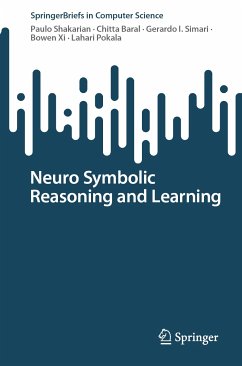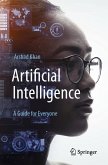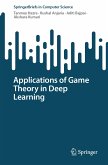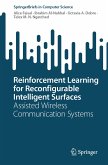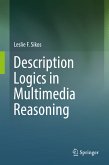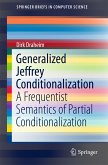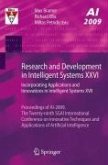Paulo Shakarian, Chitta Baral, Gerardo I. Simari, Bowen Xi, Lahari Pokala
Neuro Symbolic Reasoning and Learning (eBook, PDF)
36,95 €
36,95 €
inkl. MwSt.
Sofort per Download lieferbar

18 °P sammeln
36,95 €
Als Download kaufen

36,95 €
inkl. MwSt.
Sofort per Download lieferbar

18 °P sammeln
Jetzt verschenken
Alle Infos zum eBook verschenken
36,95 €
inkl. MwSt.
Sofort per Download lieferbar
Alle Infos zum eBook verschenken

18 °P sammeln
Paulo Shakarian, Chitta Baral, Gerardo I. Simari, Bowen Xi, Lahari Pokala
Neuro Symbolic Reasoning and Learning (eBook, PDF)
- Format: PDF
- Merkliste
- Auf die Merkliste
- Bewerten Bewerten
- Teilen
- Produkt teilen
- Produkterinnerung
- Produkterinnerung

Bitte loggen Sie sich zunächst in Ihr Kundenkonto ein oder registrieren Sie sich bei
bücher.de, um das eBook-Abo tolino select nutzen zu können.
Hier können Sie sich einloggen
Hier können Sie sich einloggen
Sie sind bereits eingeloggt. Klicken Sie auf 2. tolino select Abo, um fortzufahren.

Bitte loggen Sie sich zunächst in Ihr Kundenkonto ein oder registrieren Sie sich bei bücher.de, um das eBook-Abo tolino select nutzen zu können.
- Geräte: PC
- ohne Kopierschutz
- eBook Hilfe
- Größe: 3.64MB
Andere Kunden interessierten sich auch für
![Artificial Intelligence: A Guide for Everyone (eBook, PDF) Artificial Intelligence: A Guide for Everyone (eBook, PDF)]() Arshad KhanArtificial Intelligence: A Guide for Everyone (eBook, PDF)24,95 €
Arshad KhanArtificial Intelligence: A Guide for Everyone (eBook, PDF)24,95 €![Applications of Game Theory in Deep Learning (eBook, PDF) Applications of Game Theory in Deep Learning (eBook, PDF)]() Tanmoy HazraApplications of Game Theory in Deep Learning (eBook, PDF)36,95 €
Tanmoy HazraApplications of Game Theory in Deep Learning (eBook, PDF)36,95 €![Answer Set Programming for Continuous Domains: A Fuzzy Logic Approach (eBook, PDF) Answer Set Programming for Continuous Domains: A Fuzzy Logic Approach (eBook, PDF)]() Jeroen JanssenAnswer Set Programming for Continuous Domains: A Fuzzy Logic Approach (eBook, PDF)73,95 €
Jeroen JanssenAnswer Set Programming for Continuous Domains: A Fuzzy Logic Approach (eBook, PDF)73,95 €![Reinforcement Learning for Reconfigurable Intelligent Surfaces (eBook, PDF) Reinforcement Learning for Reconfigurable Intelligent Surfaces (eBook, PDF)]() Alice FaisalReinforcement Learning for Reconfigurable Intelligent Surfaces (eBook, PDF)32,95 €
Alice FaisalReinforcement Learning for Reconfigurable Intelligent Surfaces (eBook, PDF)32,95 €![Description Logics in Multimedia Reasoning (eBook, PDF) Description Logics in Multimedia Reasoning (eBook, PDF)]() Leslie F. SikosDescription Logics in Multimedia Reasoning (eBook, PDF)81,95 €
Leslie F. SikosDescription Logics in Multimedia Reasoning (eBook, PDF)81,95 €![Generalized Jeffrey Conditionalization (eBook, PDF) Generalized Jeffrey Conditionalization (eBook, PDF)]() Dirk DraheimGeneralized Jeffrey Conditionalization (eBook, PDF)40,95 €
Dirk DraheimGeneralized Jeffrey Conditionalization (eBook, PDF)40,95 €![Research and Development in Intelligent Systems XXVI (eBook, PDF) Research and Development in Intelligent Systems XXVI (eBook, PDF)]() Research and Development in Intelligent Systems XXVI (eBook, PDF)161,95 €
Research and Development in Intelligent Systems XXVI (eBook, PDF)161,95 €-
-
-
Produktdetails
- Verlag: Springer Nature Switzerland
- Seitenzahl: 119
- Erscheinungstermin: 13. September 2023
- Englisch
- ISBN-13: 9783031391798
- Artikelnr.: 68962205
Dieser Download kann aus rechtlichen Gründen nur mit Rechnungsadresse in A, B, BG, CY, CZ, D, DK, EW, E, FIN, F, GR, HR, H, IRL, I, LT, L, LR, M, NL, PL, P, R, S, SLO, SK ausgeliefert werden.
- Herstellerkennzeichnung Die Herstellerinformationen sind derzeit nicht verfügbar.
Paulo Shakarian is an associate professor at Arizona State University. His research focuses on symbolic AI and hybrid symbolic-ML systems. He received his Ph.D. from the University of Maryland, College Park. He is a past DARPA Military Fellow, AFOSR Young Investigator recipient, and his work earned multiple "best paper" awards.
Gerardo I. Simari is a professor at UNS, and a researcher at CONICET. His research focuses on AI and Databases, and reasoning under uncertainty. He received a PhD in computer science from University of Maryland College Park and later joined the Department of Computer Science, University of Oxford, where he was also a Fulford Junior Research Fellow of Somerville College.
Chitta Baral is a Professor at the Arizona State University, and a past President of KR Inc. His research interests include Knowledge Representation and Reasoning, NLP and Image Understanding and often involves combining logical reasoning with explicit knowledge and neural learning and reasoning with textual and perceptual inputs.
Bowen Xi is a Ph.D. student at Arizona State University, specializing in the field of Neural Symbolic AI. She is passionate about combining the strengths of neural networks and symbolic reasoning to advance the field of artificial intelligence. Bowen's research interests include developing novel algorithms and techniques that enable machines to learn and reason like humans.
Lahari Pokala is a student pursuing her Master's degree at Arizona State University, where she is majoring in Computer Science. Her interests lie in artificial intelligence and data engineering.
Chapter1 New Ideas in Neuro Symbolic Reasoning and Learning.- Chapter2 Brief Introduction to Propositional Logic and Predicate Calculus.- Chapter3 Fuzzy and Annotated Logic for Neuro Symbolic Artificial Intelligence.- Chapter4 LTN: Logic Tensor Networks.- Chapter5 Neuro Symbolic Reasoning with Ontological Networks.- Chapter6 LNN: Logical Neural Networks.- Chapter7 NeurASP.- Chapter8 Neuro Symbolic Learning with Differentiable Inductive Logic Programming.- Chapter9 Understanding SATNet: Constraint Learning and Symbol Grounding.- Chapter10 Neuro Symbolic AI for Sequential Decision Making.- Chapter11 Neuro Symbolic Applications.
Chapter1 New Ideas in Neuro Symbolic Reasoning and Learning.- Chapter2 Brief Introduction to Propositional Logic and Predicate Calculus.- Chapter3 Fuzzy and Annotated Logic for Neuro Symbolic Artificial Intelligence.- Chapter4 LTN: Logic Tensor Networks.- Chapter5 Neuro Symbolic Reasoning with Ontological Networks.- Chapter6 LNN: Logical Neural Networks.- Chapter7 NeurASP.- Chapter8 Neuro Symbolic Learning with Differentiable Inductive Logic Programming.- Chapter9 Understanding SATNet: Constraint Learning and Symbol Grounding.- Chapter10 Neuro Symbolic AI for Sequential Decision Making.- Chapter11 Neuro Symbolic Applications.
